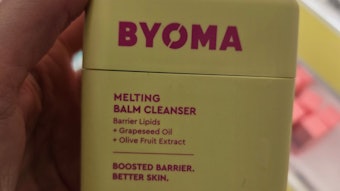Moisturizers are used on all skin types to address a range of skin issues/needs—including protection, healing and treatment, as well as moisturization. Main uses include: prevention in normal and dry skin, healing of irritated skin and treatment of diseased skin. Despite their widespread use and applications, however, the scientific literature on moisturizers lacks strong evidence to support dermatological use. Stronger scientific support of moisturizer efficacy will both help dermatologists treat cutaneous disorders and support their decisions with evidence1 as well as help manufacturers improve the efficacy of their products. This article explores current literature on the efficacy of moisturizers to help the industry understand their mechanisms and role in treatment.
Challenges to Clinical Studies
It is difficult to clinically study the efficacy of moisturizers in a meaningful way. The most reliable evidence is from prospective, double-blind, placebo-controlled clinical trials but these are demanding due to challenges such as the lack of harmonized methods, variations in test location on the body and volunteer compliance. Without a standard method to evaluate efficacy, the outcome of improved skin symptoms is time-consuming and difficult to standardize. A visual assessment, which is used frequently, is not sufficient on its own.
In addition, studies in humans do not test the most common location of dry skin—the hands. The forearm is used due to its correlation with skin reactions on the back of the hands to irritants and moisturizers. Although the forearm is thought to be easy to handle, it may not be the ideal body part to study.2 Finally, as noted, volunteer compliance is often a limiting factor. Strong smell, greasy compositions and irritation from the products may make studies unpleasant to complete.
It should be emphasized that clinical trials have had conflicting findings. Some found moisturizer use to be efficacious in the treatment of certain diseases, while others show no effect, beneficial or harmful, in using moisturizers. This contradiction is resolved by acknowledging two factors: efficacy of different formulations and tools used to test efficacy. One moisturizer formulation will not produce the same effect as the next. So while some studies demonstrate the protective effects of certain moisturizers against irritants and others report negative effects, the different formulations of those moisturizers account for the discrepancies. The use of different tools alone to test for efficacy also will produce different findings.
Prevention in Normal and Dry Skin
Williams et al. used the hand eczema severity index (HECSI), a visual assessment test, to observe hand erythema, induration/papulation, vesicles and fissuring, as well as subjects’ perceptions of stinging/burning and itching to measure the effect of moisturizers on preventing dry skin. The study was conducted on hospital employees who are prone to dry skin due to frequent hand washing. This randomized, double blind prospective study found that the use of moisturizers was associated with no change from baseline after 14 days in the treatment group, while the control group showed a statistical worsening of their HECSI after repeated soap use. Three of the five moisturizers used showed an increase of epidermal hydration as a measure of skin barrier function after 14 days of use, and also led to a statistically significant decrease in TEWL.3
Other studies also support the protective role of moisturizers. Loffler et al. found that using moisturizers as a prophylactic measure reduced the risk of irritant contact dermatitis on workers in wet-work occupations.4 Along the same lines, Halkier-Sorensen et al. showed a positive effect on skin hydration from the use of moisturizers in 55 cleaners and kitchen assistants exposed to irritants such as water and detergents.5 Hannuksela reported that moisturizers prevented irritant contact dermatitis and healed the skin faster. This study asked subjects to wash their upper arms with liquid detergent and then apply moisturizers to one upper arm for one week and twice daily without wash during the second week. The regular use of moisturizers prevented irritant dermatitis.6
Measuring TEWL and electrical capacitance, Ramsing and Agner studied skin experimentally irritated by sodium lauryl sulfate (SLS) and found that moisturizers prevented irritant contact dermatitis and also helped the skin barrier repair from damage.7
In a single blind study, Werschler et al. used visual grading and a patient questionnaire to evaluate dryness, tactile roughness and softness. Irritation ratings and digital photography were used to show that a daily moisturizing regimen and a facial hydrating serum was more effective for normal or dry skin than a daily moisturizing regimen alone.8 A decrease in TEWL in normal skin was found following application of a urea-containing moisturizer.9
As noted earlier, not all moisturizer formulations work equally or even by the same mechanisms. Crowther et al. studied normal skin to show that a commercially available moisturizer containing polyethylene glycol stearate was superior to formulations without it, inducing a statistically significant increase in the stratum corneum (SC) thickness, water gradient and hydration. The researchers used confocal Raman spectroscopy and found that the SC mean increase was 2 μm, corresponding to an approximate 10% increase in thickness.
Some clinical studies have found results that conflict with those above. Held et al. reported that the use of moisturizers on normal skin increases susceptibility to irritants (SLS and nickel), as shown by a statistically significant increase in TEWL on a treated arm compared with an untreated arm. The researchers suggest that increasing the hydration of the SC may actually decrease its barrier function and increase the penetration of the irritants.11
Healing Irritated Skin
Several studies validated moisturizer use as treatment for irritated skin. SLS was most frequently used as the irritant because it has been shown to cause barrier disruption and inflammation.
Barrier repair: Held and Agner conducted a study where skin was exposed to SLS in concentrations from 0.125% to 0.5% for 24 hr. Following this, a moisturizer with high lipid content (< 70%) was applied three times daily for nine days, which helped regenerate the skin barrier function.12
Held noted similar findings using petroleum jelly. He reported that improvement in barrier function, as evaluated by TEWL, was most notable when SLS concentration was 0.25% to 0.5% and when skin barrier evaluation was performed five to eight days after skin irritation. Petroleum was also found to enhance the initial stages of barrier repair after barrier disruption by acetone, as compared with untreated skin.13
Moisturizing with lipids: Moisturizer formulations can contain varying amounts of lipids, and those with high lipid content have been found to be more effective at healing irritant contact dermatitis than moisturizers with low lipid content.14 Other studies have reported that lipids penetrate the skin, interfering with barrier function. In mouse studies, topical lipids applied to surfactant-irritated skin disrupted the skin barrier.15 In addition to forming an inert layer on top of the skin, lipids in moisturizers have been shown to penetrate into the SC and replace intercellular bilayers.16
Treatment for Diseased Skin
There is no one algorithm to follow when deciding which moisturizer to use, or how to apply it when treating diseased skin. Many moisturizers have been used, and as noted, their efficacy depends on the lipid content, humectants, i.e., urea, ammonium lactate, propylene glycol, etc., and emollients in the formulation.
Hand eczema relapse: In a randomized, controlled prospective study, Lodén et al. found that the application of barrier-strengthening moisturizers increases the time to relapse of hand eczema from two to 20 days. Moisturizers did not affect the severity of the relapse, which was equal in both groups.17
Moisturizers and skin disease: Lebwohl and Herrmann reported that many clinical trials show the beneficial effect of moisturizers in atopic dermatitis and various other dry skin diseases. Moisturizers were shown to reduce the penetration of irritants and improve skin hydration by restoring the integrity of the SC and supplying it with vital lipids that accelerate barrier recovery. They recommend moisturizers as a first line therapy for many chronic skin diseases.18 Several more clinical studies have found moisturizers to improve the hydration state of skin in humans with conditions ranging from dry skin to xerosis19 and asteatosis.20 The active ingredients in these trials were ammonium lactate, urea and lactic acid.
Treating ichthyosis: A treatment described for ichthyosis, i.e., a group of inborn skin disorders that causes patients to experience severe skin dryness combined with hyperkeratosis, includes topical emollients and keratolytic agents; the emollients used were salicylic acid, urea and lactic acid. Bullous lesions, blisters and erosions have to be protected, and treatment must be tailored to different body parts. More than 60 materials were tested on 14 patients with various forms of ichthyosiform dermatoses. Alpha hydroxy acids and closely related compounds were found to be the most effective when applied daily for two weeks, resulting in the disappearance of scales or restoration of the skin to a healthy appearance in all patients but one who had epidermolytic hyperkeratosis.21
One study, using 30 patients with ichthyosis-associated dry skin, compared a 10% urea cream in several formulations of bases and pH values. Patients, as well as investigators, preferred the cream containing multisterols, phospholipids and fatty diols with a pH 6, rather than a cream with pH 3 that caused burning sensations in some patients.22
Although more rare than other forms of ichthyosis, lamellar ichthyosis also has been studied. In one study investigating treatment of lamellar ichthyosis, a lipophilic cream basea containing 5% lactic acid and 20% propylene glycol (LPL)b was compared with a cream containing 5% lactic acid and 20% propylene glycol (LPE)c and the lipophilic cream base containing either 5% urea (UL) or 20% propylene glycol (PL).23 While both cream bases contained petrolatum, water (aqua), mineral oil and cetearyl alcohol, the LPE cream (28% fat) also comprised ceteth-20, sodium phosphate, p-chloro-m-cresol and phosphoric acid; the LPL cream (70% fat) also comprised methylparaben, citric acid, ceteareth-25 and sodium citrate.
One of the four creams was applied twice daily to each of the four extremities of 20 volunteers for four weeks. While small changes in TEWL and skin hydration occurred with the UL and PL creams, both the LPL and LPE creams showed marked improvement. The LPL cream worked the quickest, with a 63% response rate after four weeks and a decrease in skin roughness. Due to this, most patients preferred the LPL cream and continued using it after the trial ended. The only side effects were occasional irritation in the skin folds. In other studies, patients with lamellar ichthyosis saw significant improvement after treatment with 10% N-acetylcysteine,24 and 10 patients improved with 5% lactic acid combined with 20% propylene glycol.25
Conclusions
Taken together, enormous strides have been made in understanding the complexity of dry skin syndromes.26 Although clinical trials for moisturizer efficacy are difficult to perform, they are the only evidence for what is efficacious. Clinical trials benefit both consumers and dermatologists, providing them more data to make informed decisions. More remains to be done, both experimentally and clinically, before the information required to optimize therapies for the many forms of dry skin is available.
References
Send e-mail to [email protected].
- D Berson, Recommendation of moisturizers and cleansers: a study of unmet needs among dermatology patients, Cutis 76 3–6 (2005)
- E Held and T Agner, Comparison between two test models in evaluating the effect of a moisturizer on irritated human skin, Contact Dermatitis 40 261–268 (1999)
- C Williams, SM Wilkinson and P McShane et al, A double-blind, randomized study to assess the effectiveness of different moisturizers in preventing dermatitis induced by hand washing to simulate healthcare use, Br J Dermatol 162 1088–1092 (2010)
- H Loffler and I Effendy, Prevention of irritant contact dermatitis, Eur J Dermatol 12 4–9 (2002)
- L Halkier-Sorensen and K Thestrup-Pedersen, The efficacy of a moisturizer (Locobase) among cleaners and kitchen assistants during everyday exposure to water and detergents, Contact Dermatitis 29 1–6 (1993)
- A Hannuksela and T Kinnunen, Moisturizers prevent irritant dermatitis, Acta Derm Venereol 72 42–44 (1992)
- DW Ramsing and T Agner, Preventive and therapeutic effects of a moisturizer; An experimental study of human skin, Acta Derm Venereol 77 335–357 (1997)
- WP Werschler, NS Trookman and RL Rizer et al, Enhanced efficacy of a facial hydrating serum in subjects with normal or self-perceived dry skin, J Clin Aesthet Dermatol 4 51–55 (2011)
- M Lodén, Urea- containing moisturizers influence barrier properties of normal skin, Arch Dermatol Res 288 103–107 (1996)
- JW Crowther, A Sieg and P Blenkiron et al, Measuring the effects of topical moisturizers on changes in stratum corneum thickness, water gradients and hydration in vivo, Brit J Dermatol 159 567–577 (2008)
- E Held, So moisturizers may cause trouble, Int J Dermatol 40 12–13 (2001)
- E Held and T Agner, Comparison between two test models in evaluating the effect of a moisturizer on irritated human skin, Contact Dermatitis 40 261–268 (1999)
- R Ghadially and L Halkier-Sorensen and PM Elias, Effects of petrolatum on stratum corneum structure and function, J Am Acd Dermatol 26 387–396 (1992)
- E Held and T Agner, Effect of moisturizers on skin susceptibility to irritants, Acta Derm Venereol, 81 104–107 (2001)
- L Yang, M Mao-Qiang and M Taljebini et al, Topical stratum corneum lipids accelerate barrier repair after tape stripping, solvent treatment and some but not all types of detergent treatment, Br J Dermatol, 133 679–685 (1995)
- R Ghadially, L Halkier-Sorenson and PM Elias, Effects of petrolatum on stratum corneum structure and function, J Am Acd Dermatol 26 387–396 (1992)
- M Lodén, K Wirén and K Smerud et al, Treatment with a barrier-strengthening moisturizer prevents relapse of hand-eczema. An open, randomized, prospective, parallel group study, Acta Derm Venereol 90 602–606 (2010)
- M Lebwohl and LG Herrmann, Impaired skin barrier function in dermatologic disease and repair with Moisturization, Cutis 76 7–12 (2005)
- RS Rogers, J Callen and R Wehr et al, Comparative efficacy of 12% ammonium lactate lotion and 5% lactic acid lotion in the treatment of moderate to severe xerosis, J Am Acad Dermatol 21 714–716 (1989)
- A Frithz, Investigation of Cortesal, a hydrocortisone cream and its water-retaining cream base in the treatment of xerotic skin and dry eczemas, Curr Ther Res 33 930–935 (1983)
- EJ Van Scott and RJ Yu, Control of keratinization with alpha-hydroxy acids and related compounds: I. topical treatment of ichthyotic disorders, Arch Dermatol 110 586–590 (1974)
- T Fredriksson and L Gip, Urea creams in the treatment of dry skin and hand dermatitis, Int J Dermatol 32 442–444 (1975)
- A Ganemo, M Virtanem and A Vahlquist, Improved topical treatment of lamellar ichthyosis: a double blind study of four different cream formulations, Brit J of Dermatol 141 1027–1032 (1999)
- P Redondo and A Bauza, Topical N-acetylcysteine for lamellar ichthyosis [letter], Lancet 354 1880 (1999)
- A Ganemo and A Vahlquist, Lamellar ichthyosis is markedly improved by a novel combination of emollients, Br J Dermatol 137 1011–1031 (1997)
- M Loden M and H Maibach, Textbook Moisturizer, Springer, New York, USA (2012)









